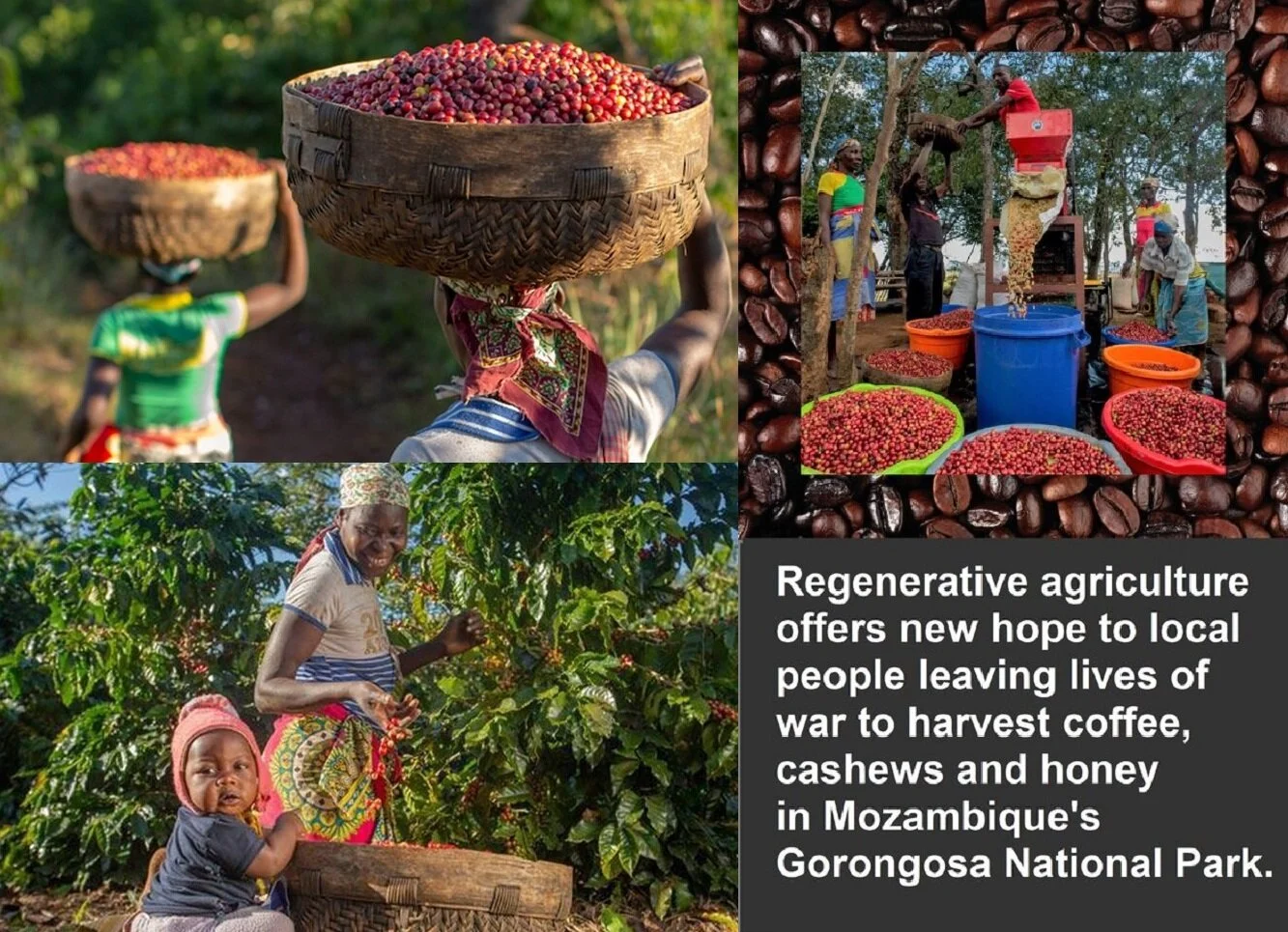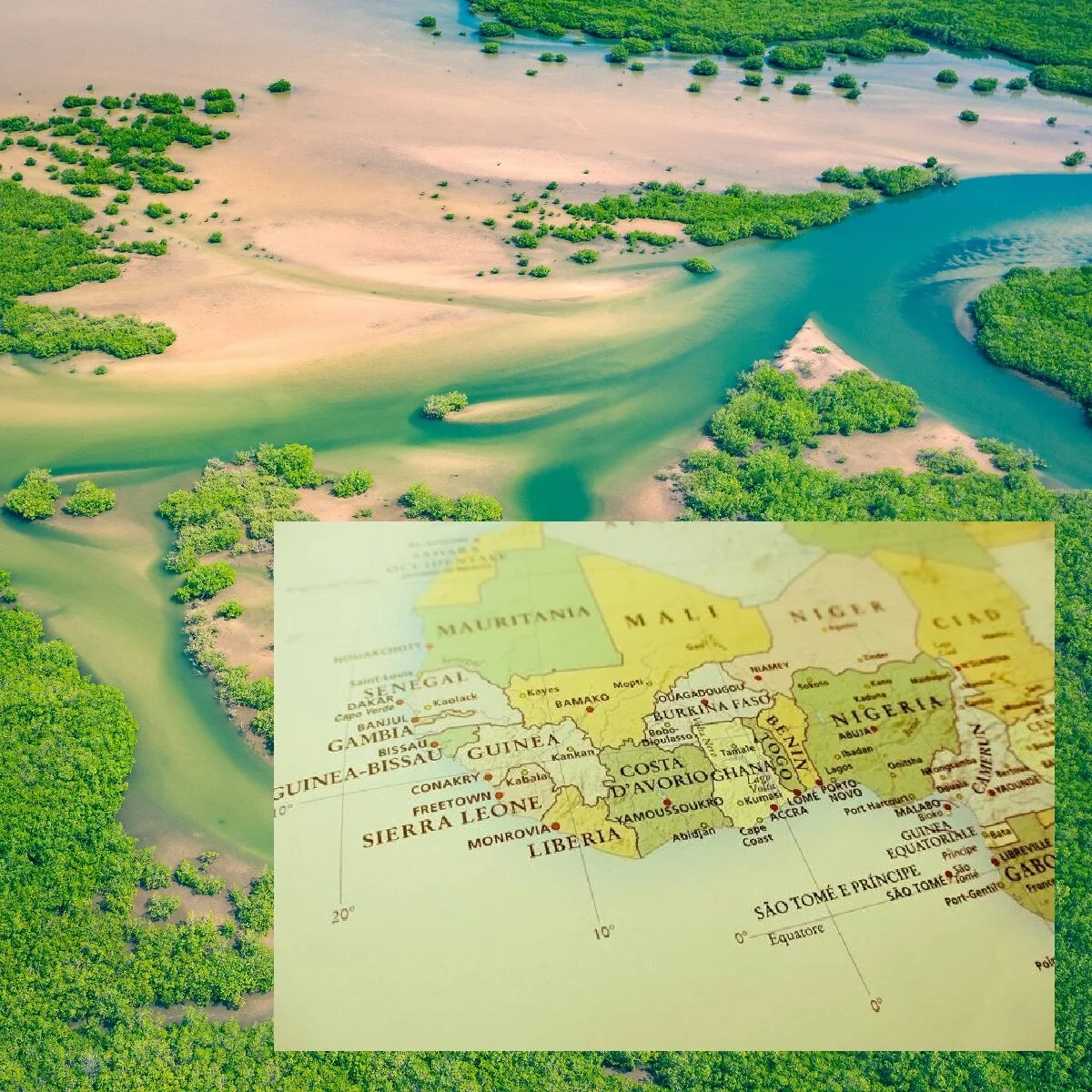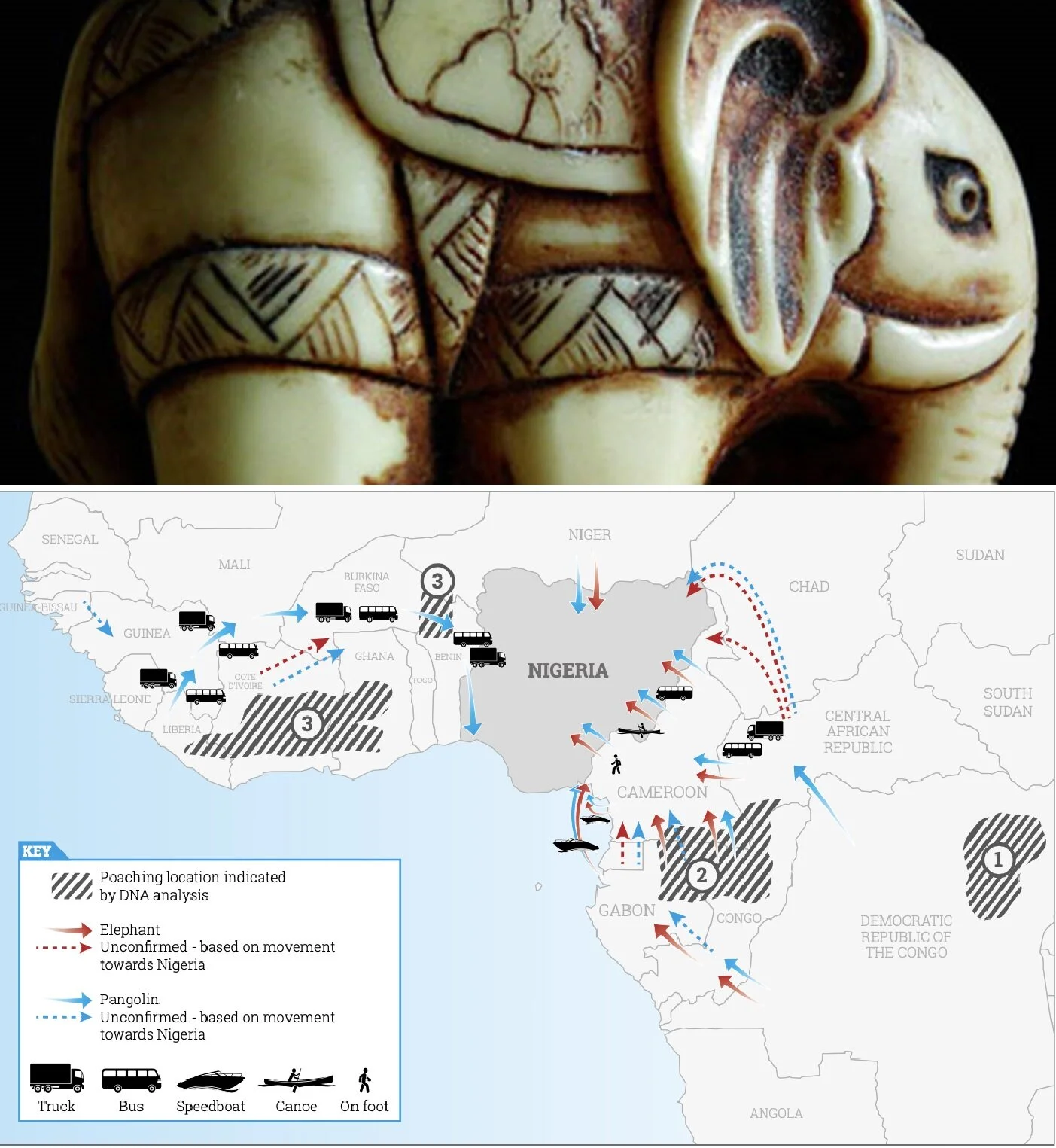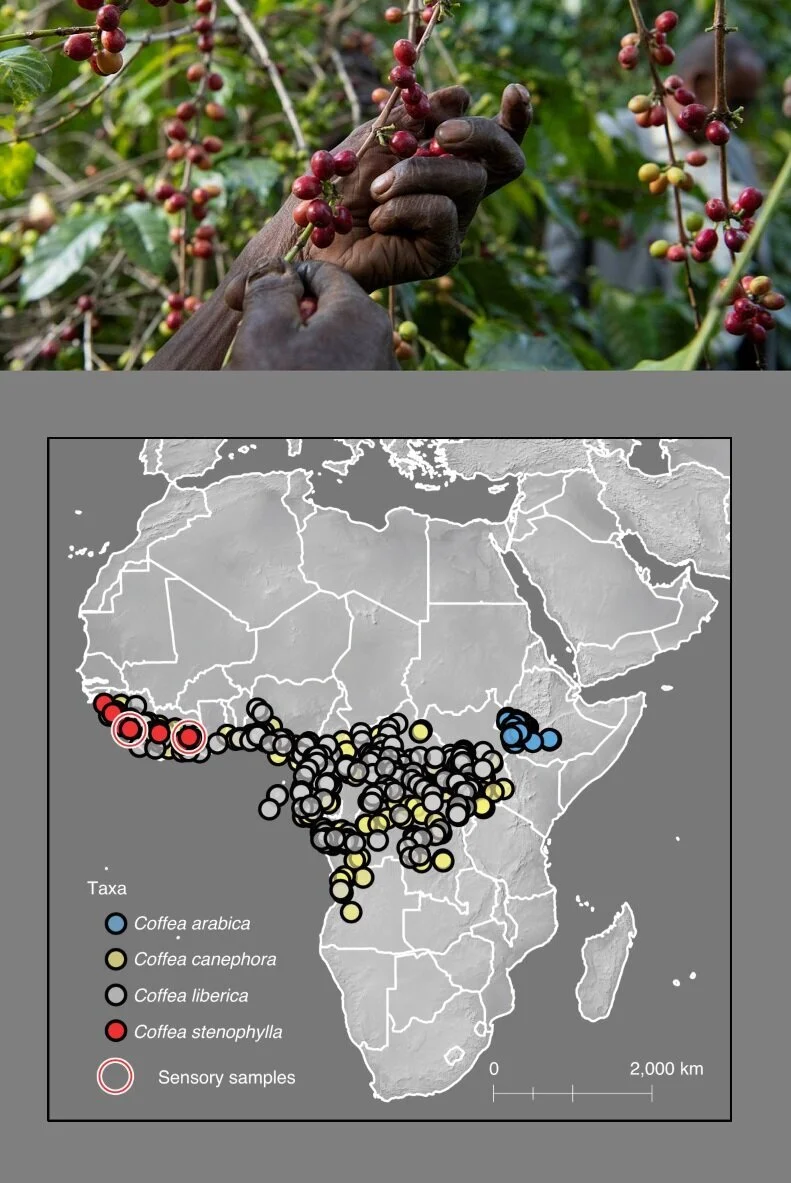Mozambique's Gorongosa National Park Grows Coffee, Cashews, Honey and Hope
/Gorongosa National Park Brings Coffee, Cashews, Honey and Hope to Mozambique AOC Sustainability
Gorongosa National Park has quite a history, from its inception 60 years ago to being battleground the subsequent Mozambique civil war, to its recent revitalization and engagement with the human community that lives among its borders.
The park enlists local people in management at all levels, and focuses on developing schools and girls’ empowerment programs, too, so in this context it seems a natural fit that the park would engage residents in a new, restorative agriculture venture which also serves to reforest the slopes of Mount Gorongosa, via agroforestry.
Matt Jordan is well suited to direct this project, having served as a Peace Corps volunteer in Mozambique after earning degrees in environmental engineering, and being of the belief that the fates of human societies and the natural world are intertwined, and can thrive together. Today, he serves as the Director of Sustainable Development for the park which includes overseeing projects like Gorongosa Coffee, and he answered some questions via email: his responses have been edited for brevity and clarity.
Read on about the inspiring work being done in Gorongosa. The Chimanimani Mountains are an ancient home to Stone Age rock paintings by the San people, also known as Bushmen. Today, the entire park is alive with human activity as people try to put Mozambique’s deadly civil war behind them. As many as a million humans died, and countless, princely animals killed for food. Worse still, their body parts — ivory in particular — were traded for weapons.
Gorongosa National Park Brings Coffee, Cashews, Honey and Hope to Mozambique AOC Sustainability







































